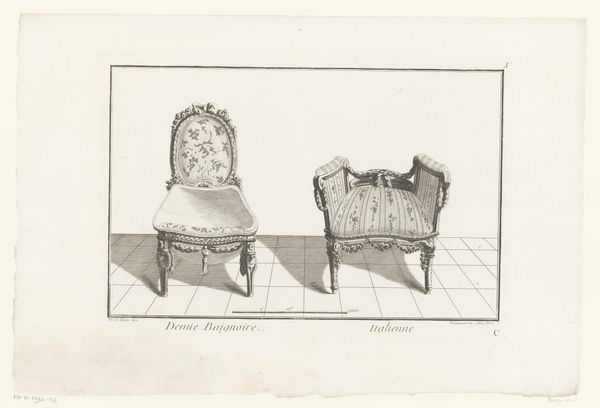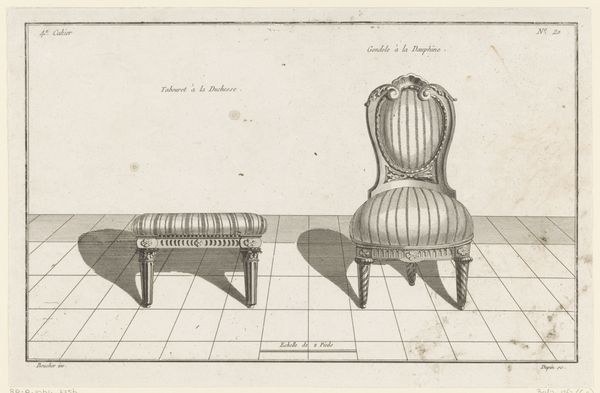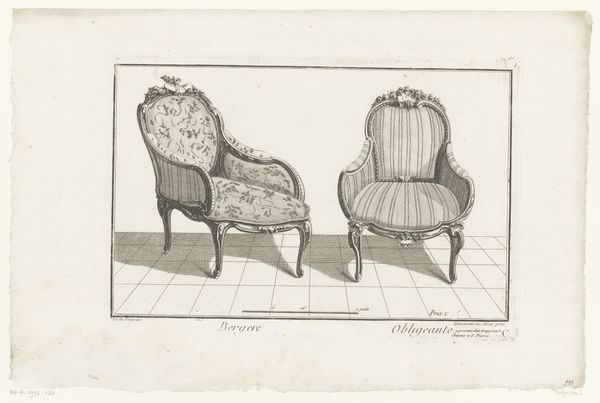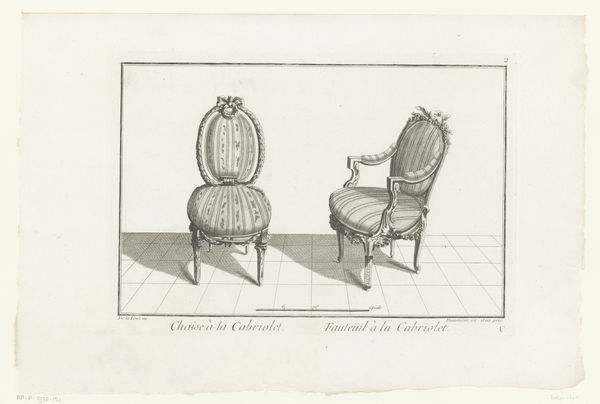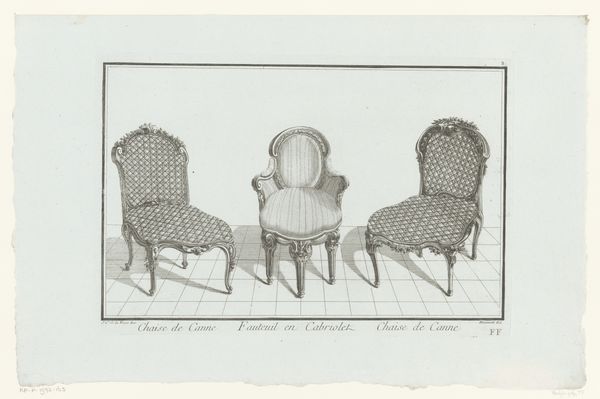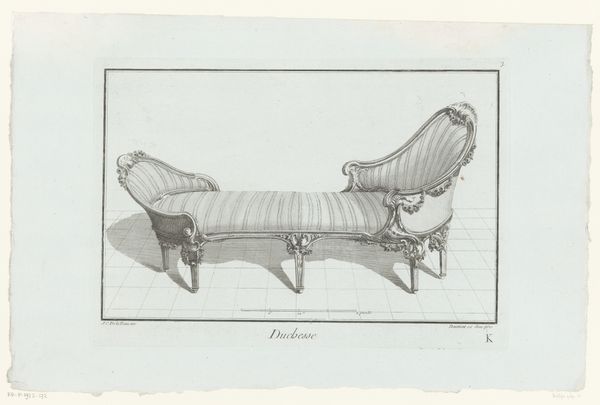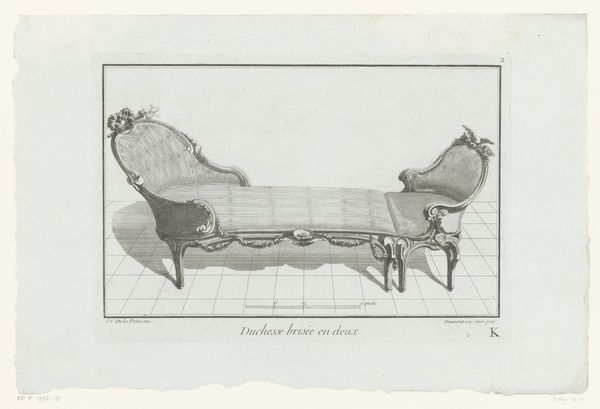
drawing, print, engraving
#
drawing
#
baroque
# print
#
old engraving style
#
line
#
genre-painting
#
engraving
Dimensions: height 218 mm, width 345 mm
Copyright: Rijks Museum: Open Domain
Curator: Here we have a print from between 1745 and 1775, titled "Twee stoelen," or "Two Chairs," currently residing in the Rijksmuseum collection. Editor: They look a bit severe. Perhaps it’s the linear quality of the engraving, but there's a crisp, almost diagrammatic feel that counters the obvious Rococo curves of the chairs themselves. Curator: Precisely! The print employs a highly structured visual language to depict these Baroque chairs. Observe the lines – clean, definitive. They delineate form with an almost mathematical precision, a directness typical of the engraving process. The composition, divided neatly in two, emphasizes the chair's structure and design. Editor: Yes, and knowing this was created as a reference for sculptors and upholsterers re-contextualizes everything. This isn't just about appreciating beauty; it's about the practical matter of design and the labour involved in recreating such intricate forms. It shows the chairs less as aesthetic objects and more as products of specific materials and skills. Curator: It becomes an almost pedagogical exercise. Notice how each element—the curvature of the legs, the floral details—are carefully articulated, creating a visual taxonomy of chair design. It guides the artisan in understanding and replicating the intended style, encapsulating Baroque ideals in an accessible, functional format. The lines act almost as an architecture of intent. Editor: Considering the social context of furniture making, each chair implies a history of resource extraction, workshops filled with artisans, the specialized skills of carving wood and weaving textiles. This engraving is less a celebration of the finished product and more a window into the complex web of production. I wonder what kind of wood or textiles would have been available? And the training required to execute that level of ornate carving? Curator: Your observations illuminate the fascinating tension here, the juxtaposition of art as visual instruction against the social dynamics inherent in the chair's production. It prompts us to look beyond the mere elegance of form, to analyze it not just aesthetically but almost semiotically. Each component signifies not only the style but also the socio-economic networks involved in bringing it into being. Editor: Precisely. Looking at these chairs anew, I can’t help but appreciate the material realities underpinning their design. It challenges me to think critically about value—not just the artistic kind but the social value embedded in every stage of an object's creation. Curator: A compelling point. Considering "Two Chairs," we appreciate the formal interplay of line and form while acknowledging the object's connection to a broader material existence.
Comments
No comments
Be the first to comment and join the conversation on the ultimate creative platform.


